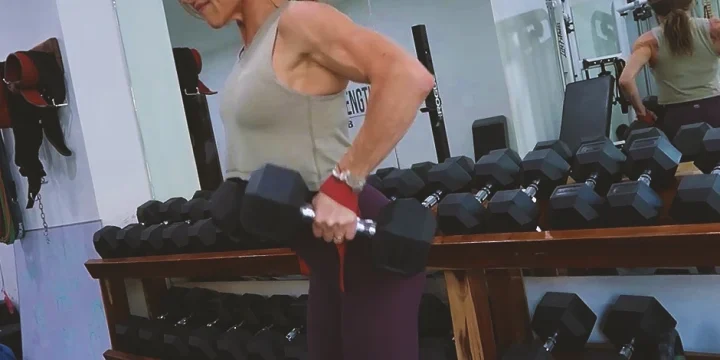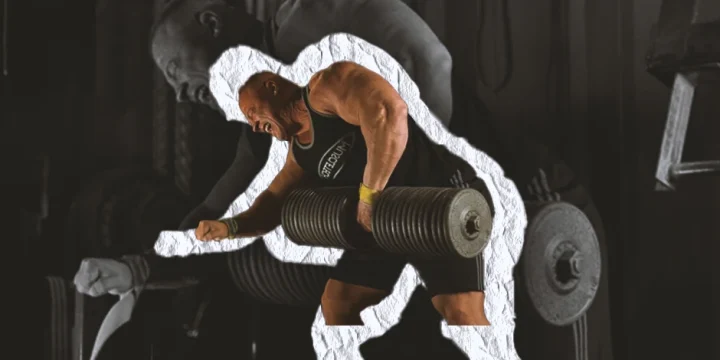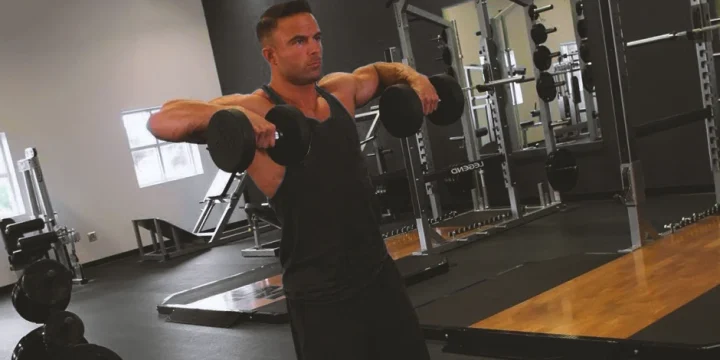Underhand or overhand grip rows are excellent row variations for improving strength and muscle hypertrophy of your upper back muscles, such as the trapezius, latissimus dorsi, and posterior deltoid.
However, most people perform them differently, rowing the barbell closer to a specific part of the body, which makes them different muscle activation-wise.
Based on my experience as a certified personal trainer and 30-hour research on barbell row grips, I created a small comparison article that will teach you everything you need to know about these two grips, including their pros and cons.
After reading the article, you will know how to perform the rowing technique correctly and correct the most common mistakes associated with all barbell rows.
Quick Summary
- Underhand rows are typically rowed towards the hips to target lats, while overhand rows are rowed towards the stomach to activate traps and rhomboids more effectively.
- To optimize upper back muscle development, including the trapezius, latissimus dorsi, and posterior deltoid, both underhand and overhand grip rows should be incorporated into your workout.
- According to the National Institute of Health, varying training methods, including changing grips, are essential for maximizing strength and hypertrophy gains.
- In my opinion, integrating both underhand and overhand rows offers a balanced approach to back training, ensuring comprehensive muscle development and preventing imbalances.
Overhand Grip or Underhand Grip?
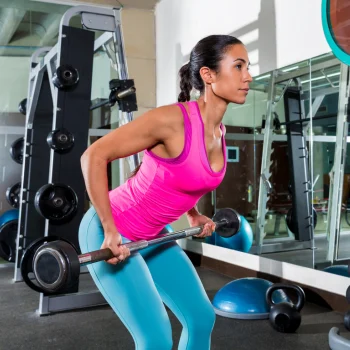
Overhand and underhand grip rows are slightly different variations of the rowing exercise, targeting the same muscles.
However, most lifters believe one grip is superior to another regarding muscle activation patterns. I must say this isn’t the truth since the grip only changes the structure of the elbow joint.
The movement that allows you to transition from an overhand to an underhand grip is called supination, and pronation is for the opposite motion.
Supination and pronation of your palms only twist the radius bone in your forearm, leaving the rest of the system untouched. It makes no difference to the shoulder if you use one of the two grips.
Training Diversity and Muscle Development
However, most people use underhand rows for lats and overhand rows for traps and rhomboids.
This is because they were taught to row to the hip when using the underhand grip and to row to the middle of the stomach when using the overhand grip.
This makes no sense because you can use both grips to target both muscle groups, but the question is truly about diversity.
According to the National Institute of Health (NIH), to build the most significant amount of strength, you must vary training methods, and changing the grip is one of the factors you must consider [1].
As noted by NIH, this also counts for a large part of hypertrophy training since these “goals” rely on similar principles [2].
"You won’t do much better than the bent-over barbell row when it comes to gaining back strength and size. Better yet, the strength you gain from rowing a heavy barbell in a hinged position carries over to the strength movements you love to do (squats, deadlifts, and other rows). You’ll also take your core and grip strength up a notch or three (but more on that below)."
- Jake Boly, Certified Personal Trainer
Types of Grip for Rows

As a trainer, I often introduce my clients to various types of grips for rowing exercises.
This counts for dumbbell, kettlebell, barbells, and rows performed with other gym equipment.
Overhand Grip
The overhand grip is the most basic of all grips regarding strength training with rows. It is the fundamental building block for all row types and grips.
Most of the time, lifters will feel they can lift the most significant amount of weight with overhand grip rows because it is the most natural.
However, this doesn’t count for everyone since this phenomenon is mainly due to the popularization of overhand grips, casting shadows over other types of grips and resulting in underdevelopment in respective areas.
The overhand grip is performed with your palms facing away from your body.
Looking from the anatomical position, you must perform pronation with your hand to enter the overhand barbell grip.
Underhand Grip
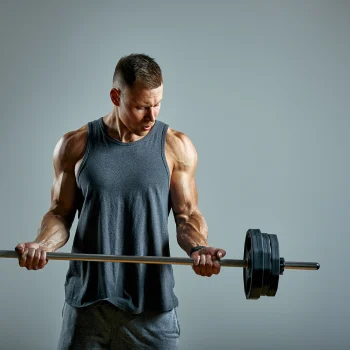
The underhand grip, a favorite among fitness buffs for targeting the latissimus dorsi, actually works best when paired with the overhand grip.
Despite popular belief, mixing both grips in rows enhances versatility and strength for everyone, athletes included.
According to the NIH, this is because mixing it up and gradually upping the ante are crucial for getting stronger. Each workout gets a bit tougher, pushing you further [3].
To nail the underhand grip, start in the anatomical position and use supination — that's just a fancy way of saying to twist your palms away from your body. Voilà, you're set for those rows!
Narrow Grip
A narrow grip represents a variation of all the grips, which requires your hands to be closer to each other barbell length-wise.
Narrow grips are usually performed for all types of rows to build thicker, not wider, muscles. Wider grips build wider muscles, and narrower grips build thicker muscles.
The rule is simple, but there are some exceptions. However, the first rule applies in the case of narrow overhand or underhand rows.
The narrow grip should be performed every other week or periodically to break the monotony of exercises and allow for better strength gains.
Building strength is all about the progression and versatility of exercises, attachments, and grips.
Wide Grip
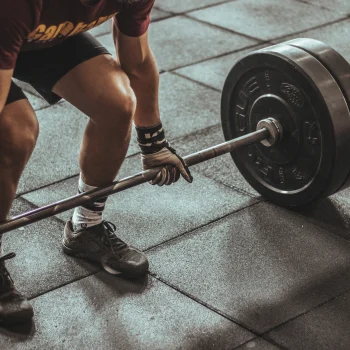
A wide grip is the best grip for building wider muscles. Think about wide grip lat pulldowns or cable machine rows.
The wider your grip, the wider your back will become.
However, one of the downsides of using a wide grip is the limited range of motion.
The wider your grip, the less range of motion will be performed during each exercise. This can be good or bad, depending on your fitness goal or training phase.
Sometimes, in superset and hypertrophy training, you will purposefully want to limit the range of motion to grow one part or specific muscle fibers better.
However, if you are only doing one exercise per muscle group, using only a wide grip can limit your strength in a full range of motion in the future, which you should definitely avoid.
Neutral Grip
A neutral grip is usually the best for putting your shoulders in a neutral position.
This means you will perform the exercise with equally internal and external shoulder rotation.
A neutral grip can be useful for pull-up and rowing variations to put off unnecessary pressure on your shoulders and allow you to focus on targeting and isolating the muscles you want to grow.
This also means you will experience fewer injuries when performing exercises with a neutral grip.
Beginners should always start with neutral grip exercises and progress to the rest of the grips as they gain sufficient experience.
"When you’re a powerlifter and you think of pulling, your brain is most likely going to head right into deadlifting. That makes a lot of sense: there’s really nothing like ripping a loaded barbell off the platform. But if you’re a powerlifter and you’re not programming plenty of non-deadlift pulls into your routine, you might really want to make some adjustments."
- Alex Polish, Certified Personal Trainer
How to Perform Underhand Barbell Rows and Overhand Barbell Rows Correctly

Here is the ultimate guide for performing both types of rows without injury:
- Load the barbell on the floor with sufficient weight so you can perform at least 8 consecutive reps without resting.
- Assume standing in front of the barbell with your shins as close to the barbell as possible.
- Assume a hip-width stance and bend over to grip the barbell. The technique doesn’t change based on the type of grip you use.
- Bend over, grip the barbell, don’t round your back, bend your knees, and lift the bar in the starting standing position.
- Assume a bent-over position with your knees slightly bent and fixed during the whole exercise.
- Your torso should be as close to parallel to the floor as possible.
- Start the exercise by rowing the barbell to the middle stomach or hip area, depending on the muscles you want to activate.
- When the barbell reaches the level of your body, hold that position for one second.
- Reverse the motion by flexing elbows and shoulders to return to the starting position.
- Repeat for 8 reps, 4 sets, and rest for 3 minutes between the sets.
Similar Articles:
Common Mistakes & Misunderstandings

As a trainer, I've noticed several common mistakes and misunderstandings my clients often make when performing overhand or underhand barbell rows.
Let's take a look at them:
Don’t Keep Your Legs Straight
You should never leave your knees in the fully locked position when performing rows.
This position puts too much stress on your knee cartilage, often resulting in permanent and dangerous injuries.
Instead, assume a slightly flexed position with your knees and keep it that way throughout the exercise.
This will negate the extra pressure on your knees and allow for a seamless rowing experience.
Not Bending Over
If you fail to bend over enough, you will only work on specific muscle fibers. This is because the range of motion will be limited due to the small decline position of your upper body.
The more you bend over, the bigger the range of motion of rowing becomes. This is why you should strive to place your body as much parallel to the floor as possible.
However, don’t bend as much as to allow for injuries related to other body parts, such as the lumbar spine.
Not Keeping Your Neck and Spine Neutral

You will most likely injure yourself if you fail to keep your neck and spine neutral.
This means going beyond the physiological lordosis and kyphosis of your spine.
In addition, it doesn’t mean you should keep your back “flat-flat,” but only in the lines of the natural physiological curvatures.
Slight lumbar lordosis and thoracic kyphosis won’t cause substantial damage but aim to avoid bending excessively to prevent injuries.
Not Keeping Your Chest Up
Not keeping your chest up ties nicely with the previous point, which is excessive thoracic kyphosis.
If you bend your thoracic spine backward, your chest will naturally cave inward, resulting in rounder shoulders and backs.
To avoid this, contract your scapular muscles to cause scapular protraction, bringing them closer to each other and allowing the chest to stay up.
Not Engaging Your Core
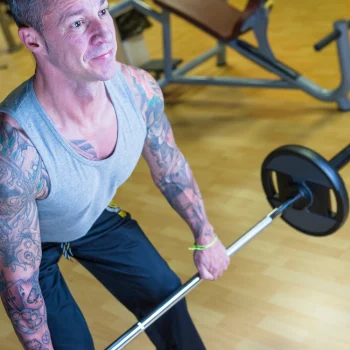
Engaging your core is essential since you want to fix your lumbar spine.
According to NIH, the only way to keep your lumbar spine fixed is to activate surrounding core muscles such as the ones of the abdominal wall and hip [4].
You must activate abdominal muscles such as the rectus abdominis, transversus abdominis, obliquus internus, and obliquus externus.
Glutes, erector spinae, and small back muscles will help further stabilize the spine during the rowing movement.
Not Protracting Your Shoulder Blades
You must protract your shoulder blades because that allows your chest to stay up and prevents thoracic kyphosis.
This is essential for preventing severe back injuries.
To protract shoulder blades, you must use the trapezius and other surrounding muscles to help bring both shoulder blades together.
This will ensure your upper back remains flat during the whole rowing motion.
Learn More: Worst Shoulder Exercises: Avoid at All Costs
A Bad Hands Positioning

For beginners, it is best to start with an overhand grip, which isn’t wider than shoulder-width apart.
If you initially fail to set the hand positioning, you may experience shoulder or elbow pain early in the training regime.
This is why it is crucial to start from a fundamental overhand grip and progress to the rest of the grips as you gain more experience.
Integration with Other Exercises
Underhand and overhand rows, targeting different back muscles, can be effectively integrated into a workout for balanced muscle development.
- Overhand rows emphasize the upper back and traps, synergizing well with pull-ups and lat pulldowns for comprehensive back engagement.
- Underhand rows, focusing more on the lower lats and biceps, pair effectively with bicep curls and deadlifts, enhancing the workout's intensity and range.
Alternating between these row variations in a routine, combined with complementary exercises like shoulder presses and chest flys, ensures a holistic approach, balancing push-pull dynamics and promoting uniform muscle growth across the upper body.
FAQs
Which Grip Is Best for Bent-Over Row?
Overhand or underhand grip bent-over barbell row is the best for bent-over rows. There isn’t much difference between the two regarding upper back muscles, but forearm muscle activation will slightly differ.
Should I Use an Overhand or Reverse Grip Barbell Row?
It depends on your goal if you should use an overhand or reverse grip barbell row. However, I recommend sticking with the overhand barbell bent-over row for beginners since that is the fundamental grip that should be mastered before alternating and switching to other useful grips.
What Muscles Do the Overhand Row Work?
Overhand rows work muscles like the trapezius, posterior deltoid, biceps brachii, and latissimus dorsi. Overhand and underhand grip barbell rows are useful for developing upper body horizontal pulling strength and muscle hypertrophy.
References:
- https://pubmed.ncbi.nlm.nih.gov/22461461/
- https://www.ncbi.nlm.nih.gov/pmc/articles/PMC7927075/
- https://www.ncbi.nlm.nih.gov/pmc/articles/PMC4215195/
- https://www.ncbi.nlm.nih.gov/pmc/articles/PMC6110226/
About The Author
You May Also Like
